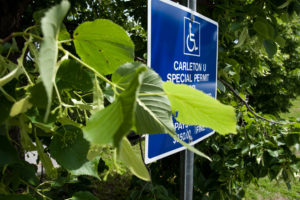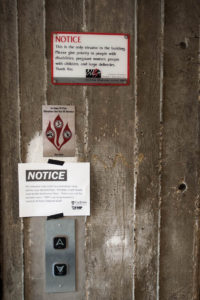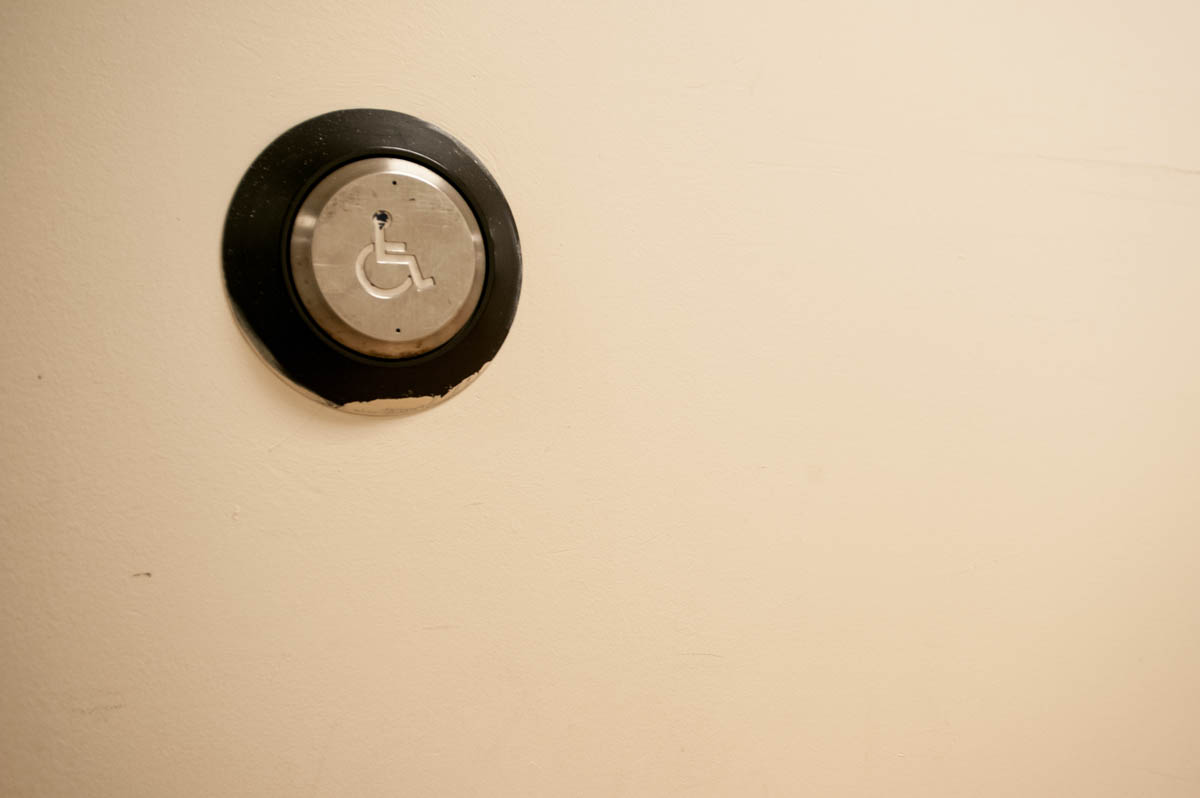After the approval of the university-wide coordinated accessibility strategy’s work-plan in May 2019, several members of the Carleton community say Carleton’s campus continues to have issues with physical accessibility.
Amanda St. Dennis, a fifth-year Carleton student, said while she sees many positives in the development and creation of a campus that is accessible to all students at Carleton, there are always improvements which can be made.
St. Dennis said she has a physical disability, which affects her ability to get around, and a non-verbal disability, which affects her ability to communicate non-verbally.
St. Dennis currently receives learning and exam support from the Paul Menton Centre (PMC) for students with disabilities.
She is also one of two undergraduate students on the accessibility framework committee at Carleton.
“Carleton says they’re accessible and they pride themselves (on being) a centre of excellence, and my viewpoint is, there’s many things they do right. I’m not going to say that Carleton’s absolutely horrible and needs improvement all the way around,” she said.
“But, if Carleton’s going to say that they are the most accessible university in Canada, then they need to do better.”

St. Dennis says even after four years of attending classes on Carleton’s campus, she continues to run into issues with physical accessibility.
She said she has experienced difficulty walking over the curbs near the main university bus stop on Campus Avenue.
“It’s a trip hazard that’s been there since I started four years ago. I’ve seen people in wheelchairs get caught, people using crutches … tripping up because it’s not safe,” she said.
“It’s the first thing I’m welcomed by, is a trip hazard.”
Adrian Chan, director of Carleton’s Research and Education in Accessibility, Design and Innovation (READi) initiative, said while he believes Carleton does well at prioritizing accessibility, he agrees that there is always work to be done.
“Accessibility itself isn’t a state. I don’t think we’ll ever be at a place where it’s like, ‘yeah we’re done, everything’s accessible,’” Chan said.
“I think there needs to be a continual commitment to accessibility, that it’s something that’s valued, that we’re always saying that we can always be better at.”
“It’s the first thing I’m welcomed by, is a trip hazard.” -Amanda St. Dennis, fifth-year Carleton student.
Chan is also the co-chair of the committee which developed the coordinated accessibility strategy of Carleton, the finalized work-plan for which was approved in May 2019.
The creation of the strategy was a performance measure outlined in Carleton’s Strategic Integrated Plan, which laid out Carleton’s goals for 2013-2018.
A common misconception is that the presence of an “accessibility sign” always means the space must be accessible. He said this is not always the case, said Chan.
“People might think, ‘okay, it’s got that sign there, it’s accessible.’ But in fact, when you talk to people with disabilities using those spaces, there are still problems with it,” he explained.
The impact of malfunctioning elevators

“If [the] UC was closed, I can’t get anywhere. I need an elevator,” she said.
Occasionally, the elevators in the UC are out of order, or become full of students rushing to classes—causing students who need to take the elevators to be late to class.
This has “100 per cent” happened to her before, said St. Dennis.
“Even with one elevator closed, it means that everybody’s going to the one that’s open, which means that students with disabilities—like myself—have to wait and wait and wait and wait to get on an elevator, which can then make us late for class,” she said.
While he thinks Carleton is a “fairly accessible campus from a physical perspective,” he said there are always physical barriers that exist—especially due to the amount of ongoing construction on campus, said Chan.
“Sometimes, accessibility isn’t built into the entire process,” he said. “So, if construction is causing a particular pathway to be closed down and no longer can be used, having accessibility thought through during that closure, like [asking], ‘what are the alternatives?’ I think needs to be better integrated.”
University-supported accessibility initiatives
Jesse Stewart, Carleton professor and organizer of the “We are All Musicians” (WAAM) research-creation project—which focuses on “inclusive music-making”—said Carleton has always been willing and able to assist him.
Stewart’s initiatives are supported by Carleton’s FutureFunder, a university fundraising program.
“The idea is to make music accessible to as many people as possible. Including those who may have experienced a barrier,” Stewart said.
“I didn’t see other organizations that were really doing that and making music accessible in Ottawa.”
“In 2009, the NAC asked me to facilitate an interactive exhibit for Canada Day,” he said. “They asked me to make something out of recycled garbage, junk to make music on.”
Stewart remembered being amazed by the inclusivity and seeing people of “different backgrounds, linguistics, from all over” coming together on Canada Day to make music, he said.
Since then he has committed himself to working on music accessibility, working with departments such engineering and health sciences, he said.
“Sometimes with things like this, it’s just lip service or empty rhetoric from the top brass, but this is something they’ve put resources into supporting. I do think there is a genuine desire there and I do think they see the benefit to the university,” Stewart said.
Better communication of changes to campus accessibility
St. Dennis said she would like to see the university’s communication department improve on how quickly it informs students on changes to campus accessibility—especially issues with major campus elevators.
“When the [main] UC elevator … went down, a lot of the students didn’t realize it until day two, day three—and most of us found out because other people were telling us,” she said.
“It shouldn’t be the students’ job to hear it through the grapevine. Carleton should right away put an announcement out, much like they did when the elevator for the library was affected by the whole fire alarm thing.”
“Accessibility itself isn’t a state. I don’t think we’ll ever be at a place where it’s like, ‘yeah we’re done, everything’s accessible,’” Chan said.
“I was impressed, because you went from not communicating the UC [elevator] shutdown to … ‘the elevator is out of service, here’s an alternative,’” she added.
Chan said he hopes Carleton can celebrate its achievements in the areas of accessibility, while continuing to be open to looking for ways to improve.
“What I’d like to see is that the Carleton community does recognize that, as an institution, we do have a fairly long history in accessibility, that we’ve contributed positively in many aspects to that,” he said.
“Nevertheless, this idea of the need for continual improvement still exists. And I hope that the entire community continues to value accessibility, and continues to move forward.”
—With files from Tim Austen
Photo by Tim Austen






